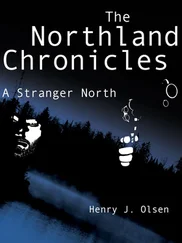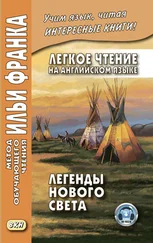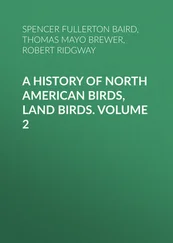North American Agroforestry
Здесь есть возможность читать онлайн «North American Agroforestry» — ознакомительный отрывок электронной книги совершенно бесплатно, а после прочтения отрывка купить полную версию. В некоторых случаях можно слушать аудио, скачать через торрент в формате fb2 и присутствует краткое содержание. Жанр: unrecognised, на английском языке. Описание произведения, (предисловие) а так же отзывы посетителей доступны на портале библиотеки ЛибКат.
- Название:North American Agroforestry
- Автор:
- Жанр:
- Год:неизвестен
- ISBN:нет данных
- Рейтинг книги:4 / 5. Голосов: 1
-
Избранное:Добавить в избранное
- Отзывы:
-
Ваша оценка:
- 80
- 1
- 2
- 3
- 4
- 5
North American Agroforestry: краткое содержание, описание и аннотация
Предлагаем к чтению аннотацию, описание, краткое содержание или предисловие (зависит от того, что написал сам автор книги «North American Agroforestry»). Если вы не нашли необходимую информацию о книге — напишите в комментариях, мы постараемся отыскать её.
Explore the many benefits of alternative land-use systems with this incisive resource North American Agroforestry
North American Agroforestry
North American Agroforestry — читать онлайн ознакомительный отрывок
Ниже представлен текст книги, разбитый по страницам. Система сохранения места последней прочитанной страницы, позволяет с удобством читать онлайн бесплатно книгу «North American Agroforestry», без необходимости каждый раз заново искать на чём Вы остановились. Поставьте закладку, и сможете в любой момент перейти на страницу, на которой закончили чтение.
Интервал:
Закладка:
Opportunities for Institutional Development
The continued development of a domestic focus on agroforestry offers unique opportunities for various organizations responsible for supporting the nation’s food, forage, livestock, and fiber‐producing networks. These include academic institutions, state and federal government agencies, non‐governmental organizations (NGOs) that include conservation‐oriented organizations, and the private sector. Such opportunities enhance the ability of these groups to provide support to rural communities while responding to public demand for more sustainable and environmentally benign land use practices (National Research Council, 1996; USDA, 2019). Previous experience in both developed and developing countries clearly demonstrates the need for institutional collaboration in developing effective agroforestry policies (Biggs, 1990). Domestic agroforestry has reached the point where new, interdisciplinary, and interagency approaches to integrated land use management are underway (USDA, 2019), thereby serving as a design methodology for reuniting the fields of agriculture and forestry in a common quest for sustainability.
Academic Institutions
The development of a domestic agroforestry program is especially important to the nation’s land‐grant institutions, and specifically their state land‐grant colleges of agriculture and forestry. After successfully achieving the goal of enhanced scientific rigor (USDA, 1987), these institutions are now being criticized for moving away from their original applied missions, thus becoming less directly responsive to the needs of the public (National Research Council, 1996). In spite of this trend, the development of comprehensive agroforestry programs and multiple partnerships focused on helping private rural landowners is well underway across the United States (USDA, 2015).
Land‐grant institutions are also responsible for educating future professionals. The teaching of agroforestry courses offers the opportunity to help meet the interests of students for an interdisciplinary, problem‐solving education, which is difficult to provide due to the demands for scientific rigor within discipline‐based curricula (Gold & Jose, 2012; Lassoie, 1990; Lassoie, Huxley, & Buck, 1994). More specifically, agroforestry can provide a model for teaching holistic approaches to land use management and may attract students from a wide variety of disciplines within the agricultural and natural resource sciences. Likewise, agroforestry provides an intersection between major fields of study, and reconnecting agriculture and forestry will certainly strengthen these fields as they move to develop a scientific basis for new management paradigms. In addition, new opportunities for funding and program development will arise as the importance of domestic agroforestry increases, thereby providing new areas for professional advancement by young academics.
Land‐grant institutions are emphasizing interdisciplinary and transdisciplinary research to deal with real‐world problems that cross disciplines. This approach also recognizes that many of the problems we face today require solutions that require an interdisciplinary and/or transdisciplinary approach (Stock & Burton, 2011). Agroforestry, with its roots as an applied science, provides ample opportunities for research across biophysical and social science disciplines to address applied problems.
Lastly, a domestic focus on agroforestry will further emphasize the importance of developing and maintaining a strong international component within the land‐grant university system (Globalizing Agricultural Science and Education Programs in America Task Force, 1997) as many of the examples of successful agroforestry activities come from projects in developing countries (Nair, 1989, 1993; Garrity et al., 2010; Pinho, Miller, & Alfaia, 2012). Hence, a comprehensive agroforestry program from the nation’s land‐grant institutions could recommit and recharge the intellectual energy necessary to address the needs of the peoples of the world, a much broader mission than originally identified for these institutions (National Research Council, 1996). Online offering of degrees and certificates is another avenue by which land‐grant institutions could offer much needed agroforestry training both nationally and globally. Such a program was initiated in 2013 at the University of Missouri, offering graduate degrees or certificates in agroforestry entirely online (Gold & Jose, 2012).
Government Agencies
State (e.g., departments of natural resources, environmental conservation, agriculture, and markets) and federal (e.g., U.S. Forest Service, USDA Natural Resources Conservation Service (NRCS), USDA Agricultural Marketing Service (AMS), USDA Agricultural Research Service (ARS), USDI Bureau of Land Management, and U.S. Environmental Protection Agency) agencies are gaining from the development of a domestic agroforestry program. The existing domestic program depends on, and promotes, interagency cooperation and effectiveness, areas always in need of improvement. Agroforestry provides a unique opportunity to foster new approaches to helping the farming and forestry communities with incentive programs, promoting needed rural development (Schoeneberger, Bentrup, & Patel‐Weynand, 2017; USDA, 2019). This is especially important to small, independent farmers and nonindustrial forest landowners. While presently there is a trend toward rapid consolidation of small farms into larger corporate structures, with large and super‐large farms controlling most of the fiber and food production in the country, there is growing recognition and appreciation for the important roles that small farms play in producing not only foodstuff but also a variety of economic, social, and environmental products and services (Schoeneberger et al., 2017). There is also a growing sector of beginning small farmers and immigrants entering rural areas interested in more diverse systems and organic options that adapt well to agroforestry management. This same population is often more open to the labor‐intensive options associated with agroforestry production practices.
A report of the USDA National Commission on Small Farms (USDA, 1998) identified policy measures that are needed to enhance and preserve the important values of small farms; they recommended specifically that agroforestry offers small farm operators a means for economic diversification, windbreaks, biological diversity, and habitats for wildlife. The original publication was followed by another that offered specific legislation to support agroforestry (USDA, 2003). The report suggests that the USDA, through its extension, conservation, and forestry services, should make greater efforts to promote and support agroforestry as part of an economic and ecological strategy for a healthy agriculture. Of particular significance in establishing agroforestry policies and programs at the national level was the USDA Agroforestry Strategic Framework (USDA, 2011), which signified a major shift in the USDA’s position on the value of agroforestry in today’s agriculture. The strategic framework created a “road map” for advancing the science, practice, and application of agroforestry, broadening the USDA’s role in agroforestry beyond that of just the National Agroforestry Center. For “buy‐in” purposes, five USDA agencies and two non‐USDA partners (The National Association of Conservation Districts and the National Association of State Foresters) were brought together to develop the framework in collaboration with stakeholders across the United States. In 2019, the USDA updated its Agroforestry Strategic Framework based on current agency needs and priorities, as well as additional input from partners and stakeholders (USDA, 2019). Within the farming and forestry sectors there is a growing trend toward the fragmentation of lands and expanded ownership by a larger group of small landowners, particularly in the eastern part of the country. Agroforestry can enhance the economic viability of owning and managing these units through the production and marketing of comparatively short‐rotation, high‐value specialty items in forest farming practices (e.g., see Chapter 9). Highly visible agroforestry programs that specifically address pressing environmental problems could greatly improve the public’s image of agriculture and forestry as well as the agencies responsible for them. This could have important implications for their political futures.
Читать дальшеИнтервал:
Закладка:
Похожие книги на «North American Agroforestry»
Представляем Вашему вниманию похожие книги на «North American Agroforestry» списком для выбора. Мы отобрали схожую по названию и смыслу литературу в надежде предоставить читателям больше вариантов отыскать новые, интересные, ещё непрочитанные произведения.
Обсуждение, отзывы о книге «North American Agroforestry» и просто собственные мнения читателей. Оставьте ваши комментарии, напишите, что Вы думаете о произведении, его смысле или главных героях. Укажите что конкретно понравилось, а что нет, и почему Вы так считаете.












